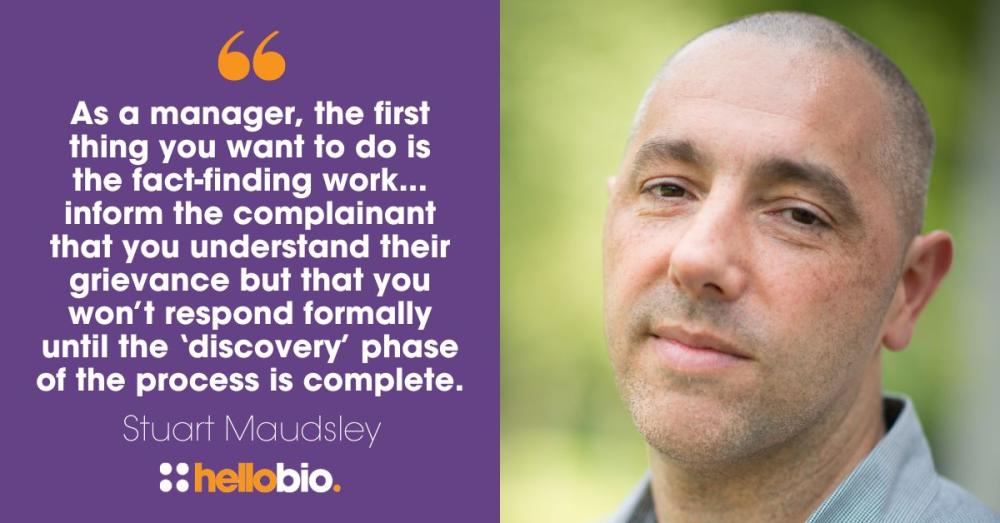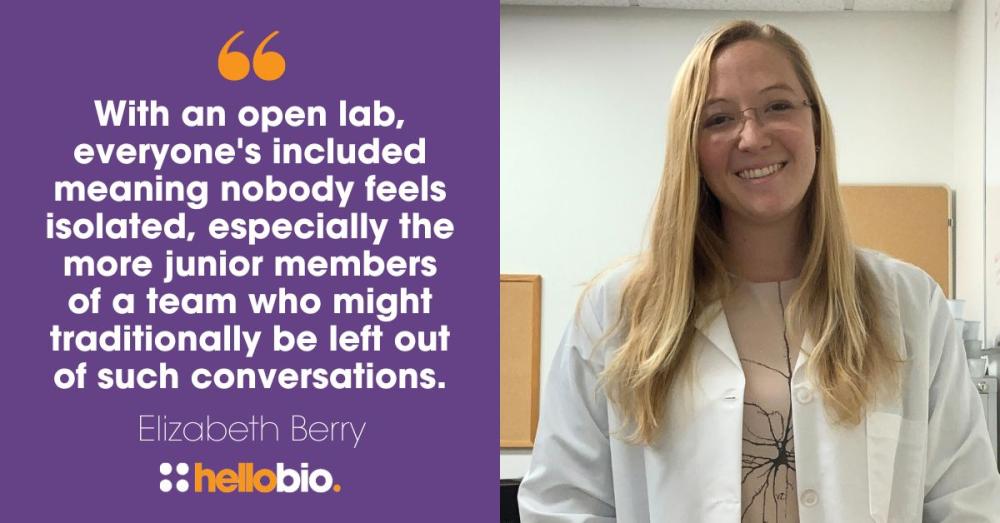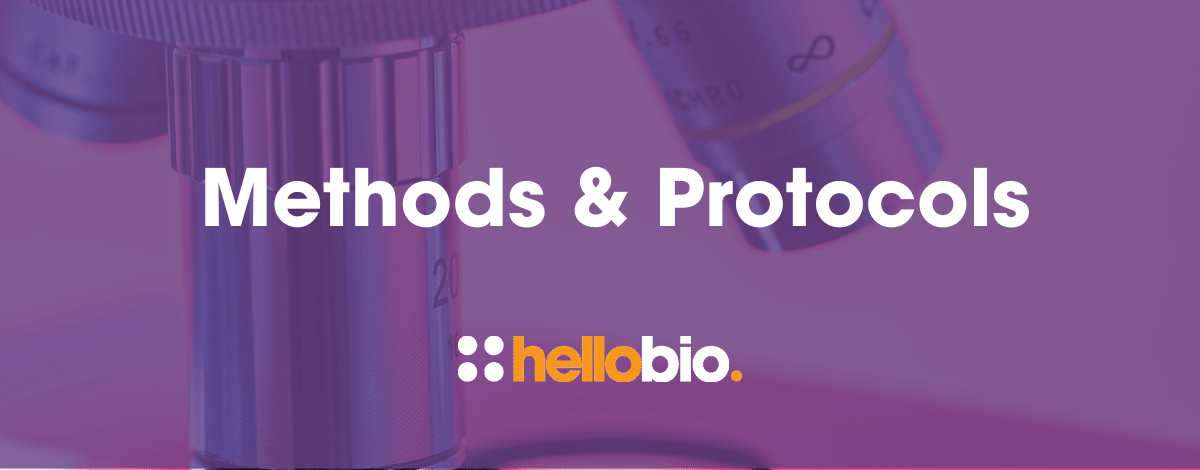Conflict Resolution: Practical Tips for STEM Leaders
In the fast-paced world of science research, a busy lab can sometimes be a stressful place to work, and on occasion these stresses can lead to conflict among colleagues. Limited resources, difficult time constraints and the pressure to produce results can bring tensions to the surface, and it’s the role of a lab leader to prevent these conflicts from affecting team morale and damaging productivity.
Whether you’re an experienced lab manager or just setting up your first lab, there’s plenty to consider when learning to deal with conflict among your team members in a fair and professional way.
At the Hello Bio LabLife Conference 2024, this topic was explored by Stuart Maudsley, Sarah Gruneisen and Elizabeth Berry during their panel discussion on Effective Leadership & Communication in the Lab - you can watch the full 40-minute session on our YouTube channel here.
In this article, we highlight their top tips and share practical pieces of advice for those in STEM leadership roles who regularly deal with conflict in their labs. With tips on encouraging open communication, empowering others, documenting the facts and more, this valuable article offers advice on dealing with conflict in your lab in a fair and effective way.
Causes of conflict between scientists
Conflicts are likely to happen in busy science labs, and in fact, they are perfectly normal. Day to day disagreements between colleagues are common and will often be resolved between themselves without the need for intervention from a manager. Possible causes of lab conflict include:
- High expectations - the pressure to produce significant results can create tension between colleagues
- Tight deadlines - working to strict time constraints can add additional stress to the working environment
- Competition - a competitive atmosphere is common in science research and can put a strain on mental health, in some cases leading to incidents of jealousy or bullying
- Long working hours - a poor work-life balance can cause fatigue and burnout, leading to irritability and low mood in the workplace
- Personal differences - sometimes colleagues just don’t get along due to personality clashes, different backgrounds or beliefs
Conflict isn’t always a negative
Scientists are passionate about their work, and frustrations aren’t necessarily a sign of negativity, in fact it can demonstrate that they care about what they are doing and are serious about getting it right. Disagreements can also occur at any level, no matter the amount of experience or seniority. Stuart Maudsley explains: “If a team member is not engaging their personal feelings or displaying any passion or drive within a programme, I’d be worried. It’s worse for a manager to think a team member doesn’t care, than to have to deal with a little conflict from time to time. It’s perfectly normal, and a build-up of stress and tension can affect anyone, from a first year grad student to a senior professor.”
Establishing what happened
When a team member comes to you with an issue concerning conflict with a lab colleague, the first thing to do is to establish exactly what has happened. It’s important not to make any assumptions or jump to any conclusions. Gather as much information as you can before taking any action. Each situation will be unique and each conflict will be different, so never assume the problem or the cause until you have done your research. Don’t dismiss a complaint just because it seems ‘minor’ to you - it might be much more significant for somebody else.
Stuart refers to this initial data-gathering mission as the ‘discovery phase’ of the process. He said: “It's a bit like handling a legal case. As a manager, the first thing you want to do is the fact-finding work, what they call in the legal field 'discovery'. It’s only through this phase that you’ll truly begin to understand what has happened, so inform the complainant that you understand their grievance, but that you won’t respond to them formally until the ‘discovery’ phase of the process is complete.”
Document everything
During this phase, be sure to document everything. Take information down in writing as soon as you can, being sure to do so with 100% accuracy. This is especially critical in conflicts of a more serious nature, where formal warnings or reprimands might be required. Take written and dated statements from all parties involved, keep back-up copies and store them securely.
Stick to the facts
It’s absolutely essential that you don’t bring your own personal opinions into a situation. When documenting the events, stick to the facts and don’t use language that could be considered in any way biassed. Sarah Gruneisen stresses the importance of this: “It's vital when you are documenting to stick to facts. Don’t describe how another person ‘thinks’ or ‘feels’ about a situation, because this is something you can’t truly know. Don’t use the term ‘inappropriate’ - for example, “the person asked an inappropriate question” - because whether it was inappropriate or not is an opinion. Simply state the question that was asked and the words that were used. Stick to the facts, avoid adjectives and keep your personal opinions out of the situation.”
Two sides to every story
Usually the first you’ll hear about a conflict will be an individual account coming from just one person's point of view. Remember that there will be two sides to any story, and it’s important to listen to both sides without judgement. Sarah said: “I think it’s very important to realise that you can have two people in the same lab, experiencing the same event, yet sharing different accounts and having different reactions based on past life experience, personality, or emotional connection. You might hear two completely different stories, yet both could be factually correct. That's something that's vital to remember when you're a lab leader.”
Encouraging open communication
Once the facts have been established, it’s time to encourage communication between the conflicting parties, and doing so in an open and honest way is the best method for maintaining transparency and authenticity. Stuart says: “If all parties are happy to do so, then proceed with open meetings while encouraging honest communication. There's nothing worse than closed door meetings or clandestine conversations, that's the worst thing you can do because it creates mistrust. As a manager, you can be seen to be cloistering, and other lab members can feel excluded.”
Elizabeth Berry agrees that open conversation can help individuals feel less isolated, and can encourage others to speak up when perhaps they might not have otherwise: “A lot of mentors typically go to the closed door method instead of having an open lab conversation, and I think that's a mistake. With an open lab, everyone's included meaning nobody feels isolated, especially the more junior members of a team who might traditionally be left out of such conversations. It can also encourage others to open up more to their colleagues, rather than just festering with their thoughts alone.”
Keep the team together
Involving everybody, whether a small project team, a larger group or a full department, will help to maintain morale, and will encourage others to strive for harmony between members. Aiming accusations at just one person will be divisive and will only further the conflict with potentially deeper resentment.
Staying out of the ‘drama triangle’
Although your role may be to facilitate such conversations, it’s important not to think you’re the only person responsible for fixing the problem. Encouraging the conflicting parties to find their own solutions is key to effective conflict resolution. Sarah explains the concept of a ‘drama triangle’ and why being the ‘hero’ is not necessarily your job: “I try not to jump into one of the three roles within the 'drama triangle'. You have the victim, you have the persecutor and you have the hero. As a lab leader you will be approached by the victim giving you their account of something distressing that has happened to them, and the expectation will be on you as the ‘hero’ to fix the problem. It might be your instinct to swoop in and save them, but that's not empowerment. Empowerment is much more valuable for all parties in the long-term.”
The power of empowerment
Encouraging empowerment will help the complainant to think factually, own their own feelings and create ‘courageous conversations’. The role of a mediator is not to start, lead or dominate the discussion. Instead try to gently guide the conversation towards a natural resolution where there is no ‘right’ person or ‘wrong’ person. Allow everyone to recognise and understand the feelings and emotions for all involved and to find a place where all parties are comfortable.
As a leader, ask yourself the following questions during a mediation session:
- What does each person need from this situation?
- What is missing for each person?
- What hurt is being felt and where is it coming from?
- What is the root cause of this conflict?
Encourage conversations to start with ‘I’ rather than ‘you’. By reflecting on how the situation is making that person feel in themselves, they will often get to the true root of the problem with more clarity and without blame.
Don’t feel responsible
And finally, as the manager of a lab it’s natural to feel responsible for the wellbeing and harmony of your team. Remind yourself that conflict is always going to happen within any group of humans! You should never feel like a failure as a lab manager if conflict has arisen within your team. In the (hopefully) very rare cases of very serious conflict, which could for example include rule-breaking, discrimination, abuse or sexual harassment, be sure to maintain the same high standards by recording every detail accurately, and don’t hesitate to refer the matter to higher ranking management where appropriate.
Watch the full panel discussion at the Hello Bio LabLife Conference 2024
This article is based on content from a panel discussion on 'Effective Leadership and Communication in the Lab' at the Hello Bio LabLife Conference on 18th January 2024. You can watch the full discussion plus an audience Q&A session on the Hello Bio YouTube channel:
About the contributors
STUART MAUDSLEY
Professor Stuart Maudsley is currently the Odysseus Chair of Receptor Pharmacology and head of the Receptor Biology Lab at the University of Antwerp. Stuart is also Co-Founder of HeptOME - a start-up focused upon delivering the next generation of G protein-coupled receptor (GPCR) based therapeutics.
Read more articles by Stuart on the Hello Bio blog:
- The 12-Step Guide to Getting the Most From Your Mentors
- Why Scientists Need Great Mentors
- Scientist Talks: Professor Stuart Maudsley
Connect with Stuart:
- Twitter: @StuartMaudsley
- LinkedIn: Stuart Maudsley
- ResearchGate: Stuart Maudsley
- Instagram: @receptorbiologylab
SARAH GRUNEISEN
Sarah Gruneisen is a Director of Engineering, Leadership Coach, Trainer and Speaker who takes tech and engineering leaders on the ultimate quest to find their core power and ignite the fire of motivation within their teams. Her mission is to encourage trust, empathy, and autonomy among leaders and revolutionize the way that organizations in the tech and engineering world approach leadership.
Connect with Sarah:
- Twitter: @s_gruneisen
- Avagasso Coaching: https://www.avagasso.com/
- LinkedIn: Sarah G.
- YouTube: Avagasso Coaching
ELIZABETH BERRY
Elizabeth Berry is a Postdoctoral Fellow working at New York Medical College in the laboratory of Dr. Christopher Leonard. She studies how opioids impact the brain, specifically how they change the electrical properties of specific neurons called orexin/hypocretin neurons in the hypothalamus. The techniques she is most well known for are her skills at electrophysiology as well as immunocytochemistry.
Connect with Elizabeth:
-
- Twitter: @NatureNeuroPhD
- LinkedIn: Elizabeth A. Berry, PhD
- Instagram: @nature.neuroscience.phd
________________________________
If you enjoyed this article, why not check out the other resources available on our blog. We are passionate about supporting life scientists including early career life scientists and PhD students - with really low-priced reagents, antibodies and biochemicals, early career scientist grants, and resources to help with both personal and professional development. We know how tough it is - so we hope you find these helpful!
More General Support for Life Scientists
For advice on wellbeing, dissertations, presenting at conferences, wellbeing, PhD support, networking and lots more, we have a huge range of articles to help - just click below:
Save up to 50% on our high purity reagents...
When you get to the stage of planning your experiments, don't forget that we offer a range of low-cost, high-purity agonists, antagonists, inhibitors, activators, antibodies and fluorescent tools (yes - they really are around half the price of other suppliers!) You can use our Quick Multi-Search Tool to search for lots of products in one go, and the range includes:
- Enzyme inhibitors and activators
- Chemogenetic ligands
- Ion channel modulators
- GPCR & ionotropic receptor ligands
- Cell biology reagents & biochemicals
Technical resources
Try our Molarity Calculator: a quick and easy way to calculate the mass, volume or concentration required for making a solution.
Try our Dilution Calculator: an easy way to work out how to dilute stock solutions of known concentrations
We also offer a comprehensive range of technical resources including antibody protocols and methods, product guides and mini-reviews:
And finally, don't forget to check back in with our blog regularly for our latest articles. If there’s something you’d love to contribute to the community, whether that’s an interview or article, drop us a line at hello@hellobio.com
---





















